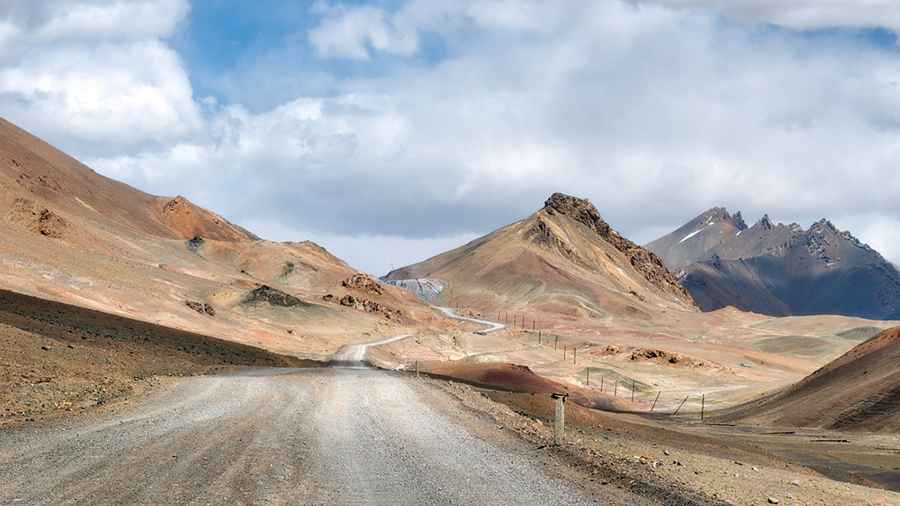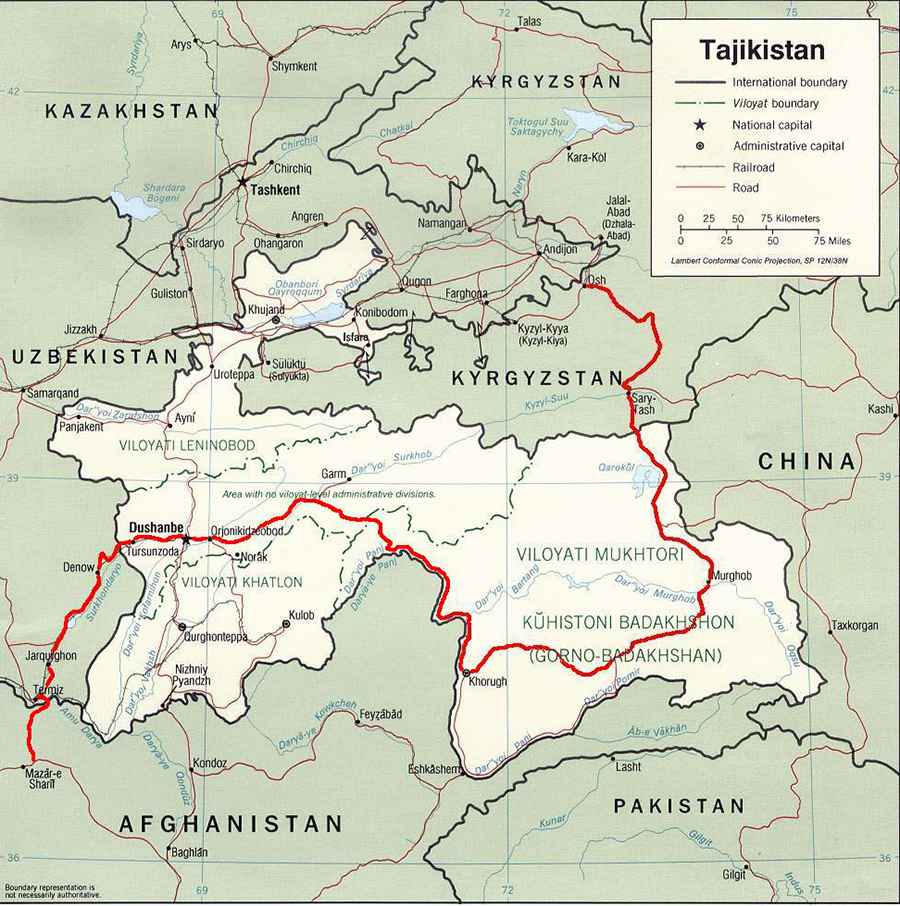Pamir Highway is the second highest altitude international highway in the world
The historical Pamir Highway (M41) is an excellent challenge for 4x4 adventure travelers. Most of the road is paved (in very bad conditions) and stretches more than 1,200km between Osh (in Kyrgyzstan) and Dushanbe (in Tajikistan) through the Pamir Mountains. The road is heavily damaged in places by erosion, earthquakes, landslides, and avalanches.

Where is the Pamir Highway?
Most of the Pamir Highway is located in Tajikistan, a country situated in the middle of Central Asia with India to the south and China to the east, but the highway also goes through Afghanistan, Uzbekistan, and Kyrgyzstan in Central Asia.
How long is Pamir Highway?
The Pamir Highway (M41) is 1,252 km (778 miles) long, running from Osh (the second-largest city in Kyrgyzstan, located in the Fergana Valley) to Dushanbe (the capital and largest city of Tajikistan). Running through one of the world's wildest locations, it’s said to be one of the most epic road trips.
Is the Pamir Highway paved?
The majority of the Pamir Highway is a 2-lane paved road. However, expect many potholes, uneven road, missing chunks of asphalt, and many twists and turns. The condition of the asphalt varies; sometimes it is really bad. Construction and maintenance levels vary substantially along the highway.
Can I drive the Pamir Highway with a 2wd vehicle?
Riding the Pamir Highway in a sedan 2-wheel drive is possible all the way, although some parts will be a struggle.
Is the Pamir Highway safe?
It’s one of the world’s most famous routes for adventurous travelers. It’s a very demanding drive, with heavy traffic (especially trucks) and an extreme risk of rockfalls. The road is not terrible nor terribly dangerous, but there obviously isn’t much tolerance for driver mistakes. An average speed of 40-50km/h is reasonable. There is mobile reception almost everywhere along the trip, although it can be weak in places. Driving mistakes can have deadly consequences because the road is small and goes along deep valleys. No barrier stands between the road and the cliffs. Traveling through here is like a trip to a parallel world, where the landscape is bigger, bolder, and infused with the eerie, all under the high, wide presence of a brilliant blue sky. Landslides and earthquakes do happen, and they can disrupt traffic for days. Hygiene standards in the Pamirs are low. Basic adventure driving rules apply. Know (how to fix) your car, don’t drive at night, concentrate on the road, and adjust your speed. Throughout the area, the land is typically rugged and dry. This road is sometimes referred to as “The Road from Hell”. If you just want to drive along the road and stop in the most typical places, people tend to finish it in 5 or 7 days.
When can you drive the Pamir Highway?
The weather is extreme, even in summers, up in the mountains. The highway is known as the second-highest altitude international highway in the world (climbing up to Ak-Baital Pass, at an elevation of 4,655m above sea level). The highway is usually open all year round but can be closed anytime when the access is not cleared of snow. The high elevation of the highway is no stranger to high winds, another grueling danger while driving on weathered cliffs. Weather in the area is extreme; winter lasts from mid-September to late May, and temperatures in winter may reach -50 C (-60 F). In summer, temperatures can reach +40 C (105 F) in July and August. The area is considered a high desert, with little rainfall, though downpours do occur. Strong winds blow all year, and severe storms may appear suddenly; it may snow any day of the year, even in the valleys.
When was the Pamir Highway built?
The road was built during Soviet times to connect parts of their imperium in this region. It was constructed partly in the 19th century (during The Great Game), partly in the 1930s. Since the breakdown and Central Asia’s independence, not much coherent maintenance has been done to the road, only in spots where damage has been caused by flash floods or scree. The route of the Pamir Highway has been in use for millennia, as there are a limited number of viable routes through the high Pamir Mountains; the road formed one link of the ancient Silk Road trade route.
Where was Spies Like Us filmed?
In the 1985 film Spies Like Us, the decoy GLG-20s played by Chevy Chase and Dan Aykroyd are told to meet their contacts on the "road to Dushanbe," a reference to the M41 highway.
Image credit: Depositphotos
